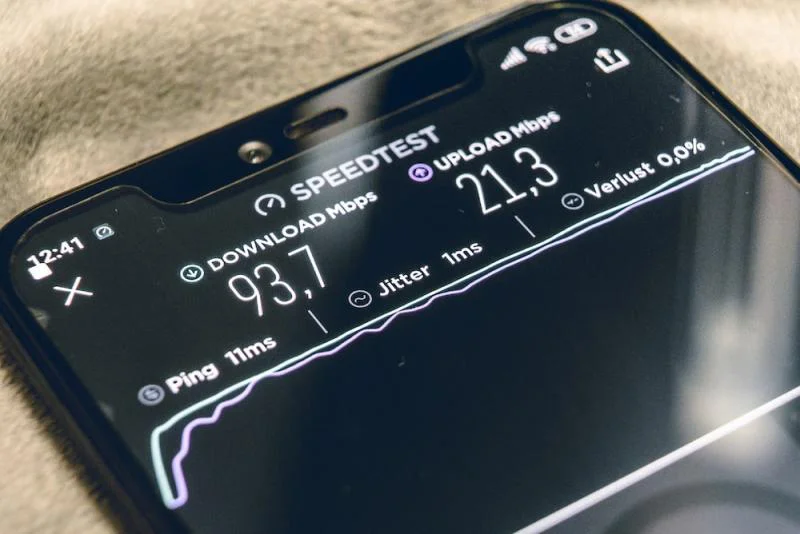The main differences between 4G and 5G networks are speed, latency, and capacity. 5G has much faster data speeds (up to 20 Gbps) than 4G (up to 1 Gbps), which makes streaming, gaming, and the overall user experience much better. The lower latency of 5G (1 ms) lets important applications like self-driving cars and remote surgeries communicate in real-time, while the higher latency of 4G (30–50 ms) makes it harder to respond. The Internet of Things (IoT), smart cities, and connected industries will benefit from 5G because it can connect more devices in the same space. 4G networks can get crowded, which slows down performance and makes them less reliable.
What is 4G?
4G, which stands for “Fourth Generation,” is a mobile communication technology that came after 3G networks and is faster, more reliable, and better at what it does. The main goal of 4G networks is to provide high-quality mobile internet services, such as smooth streaming, fast browsing, and better voice and video calling. 4G uses new technologies like Orthogonal Frequency Division Multiplexing (OFDM) and Multiple Input Multiple Output (MIMO) antennas to improve network capacity and spectral efficiency.
Users who aren’t moving can get peak data rates of up to 1 Gbps, while users who are moving can get 100 Mbps. This speed makes multimedia, online games, and downloading apps more accessible. 4G also supports voice-over LTE (VoLTE). VoLTE makes high-definition voice calls with less delay and better sound quality.
Long-Term Evolution (LTE) and WiMAX, the two primary 4G standards, offer comprehensive coverage and better network capacity to meet the growing need for mobile data. LTE is more widely used because it is flexible, can grow as needed, and works with 3G infrastructure. Faster speeds and more storage space have driven the growth of smartphones, mobile apps, and internet services. This has changed the way we talk, work, and watch videos. Yet, the advent of 5G networks promises to further transform the mobile market by opening up new opportunities for connectivity and digital innovation.
What is 5G?
5G, which stands for “Fifth Generation,” is the newest mobile communication technology. It is meant to be faster, have more capacity, and have less latency than 4G networks. It was made to meet the growing needs of advanced applications like the Internet of Things (IoT), augmented reality (AR), virtual reality (VR), autonomous vehicles, and remote surgeries.
5G networks have peak data rates of up to 20 Gbps, which allows for high-speed downloads, smooth streaming, and better communication in real-time. With latency as low as 1 ms, 5G can respond instantly, making it suitable for mission-critical applications and tasks that need to be done quickly.
One of 5G’s most important new features is network slicing, which lets operators create multiple virtual networks on the same physical infrastructure to meet different needs and use cases. The main goals of 5G are to help with Enhanced Mobile Broadband (eMBB), Massive Machine Type Communications (mMTC), and Ultra-Reliable Low Latency Communications (URLLC).
5G uses advanced technologies like millimetre-wave (mmWave) frequencies, Massive MIMO, and beamforming to improve network capacity, coverage, and energy efficiency. Even though 5G is still being rolled out, it has the potential to change industries, make cities smart, and change the way we use technology, ushering in a new era of digital connectivity and innovation.
Difference Between 4G and 5G
The primary distinction between 4G and 5G networks is based on the speed, functionality, and underlying technology, which have far-reaching effects on the user experience and the types of services that may be offered.
Speed
Compared to 4G’s maximum speed of 1 Gbps, 5G can reach up to 20 Gbps. This paves the way for 5G to support higher-quality streaming, faster downloads, and more data-intensive applications, all of which contribute to a more satisfying user experience.
Latency
Regarding mission-critical applications like autonomous vehicles, remote surgeries, and industrial automation, 5G’s ultra-low latency (as low as one millisecond) provides real-time communication and response. However, the potential for real-time interactions is constrained by the 30-50 ms latency of 4G.
Capacity
Supporting the expansion of the Internet of Things (IoT), smart cities, and related businesses is the increased density of 5G networks. Although 4G networks are superior to 3G ones, they are still susceptible to slowdowns and congestion when handling a large number of devices.
Technologies
Millimetre-wave frequencies, Massive Multiple-Input Multiple-Output, and beamforming are just a few of the cutting-edge technologies used in 5G networks, all of which improve upon the previous generations’ capabilities in these areas while also reducing the networks’ overall power consumption. Compared to 5G, the capacity and coverage of 4G networks (which use technologies like OFDM and MIMO antennas) fall short.
Use Cases
Several sectors will benefit from 5G because of its ability to support a wide variety of use cases, such as Enhanced Mobile Broadband (eMBB), Massive Machine Type Communications (mMTC), and Ultra-Reliable Low Latency Communications (5G URLC). Enhanced mobile internet and crystal-clear voice and video calls are 4G’s primary goals.
Network Architecture
Network slicing is a new feature introduced by 5G that allows the creation of several virtual networks on a common physical backbone to meet various needs. Having this option means you can tailor your usage of resources to your exact needs. This adaptability is missing from 4G, which provides a more standardised network design.
The key differences between 4G and 5G networks are in their speed, latency, capacity, technology, use cases, and network design, all of which allow 5G to open up new avenues for digital communication and innovation.







